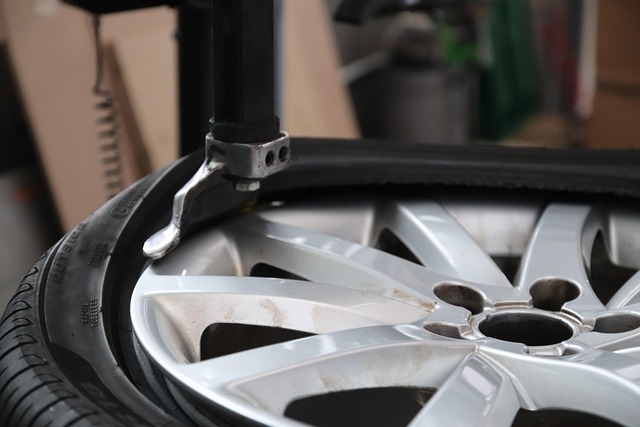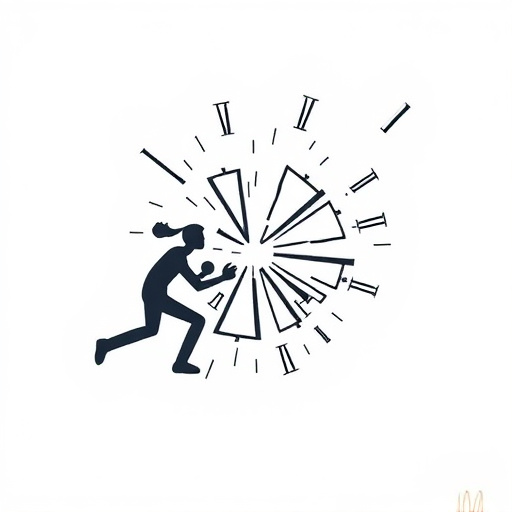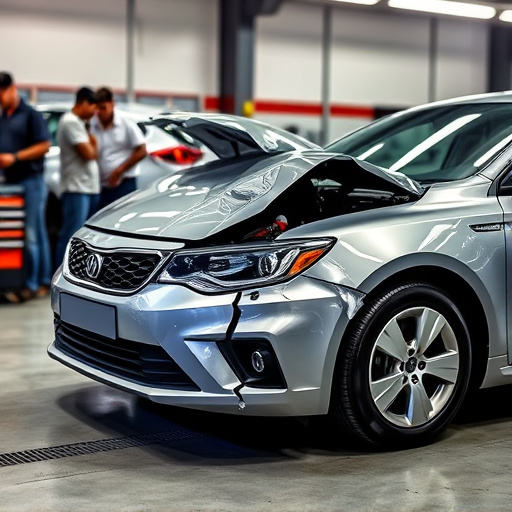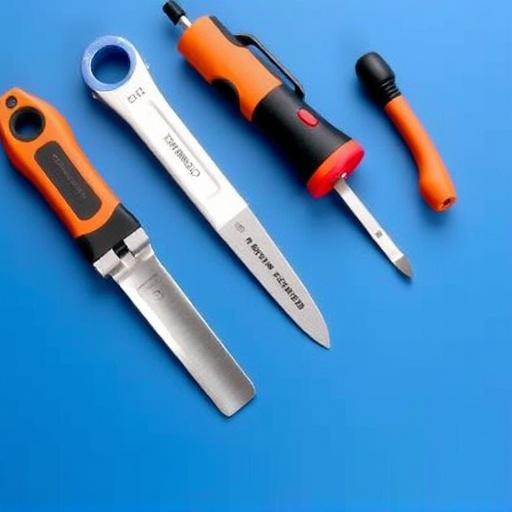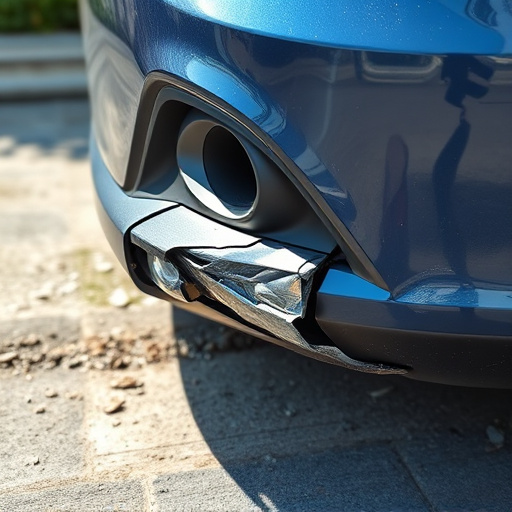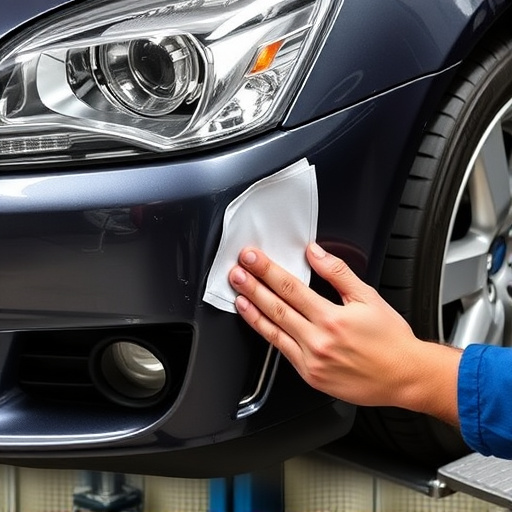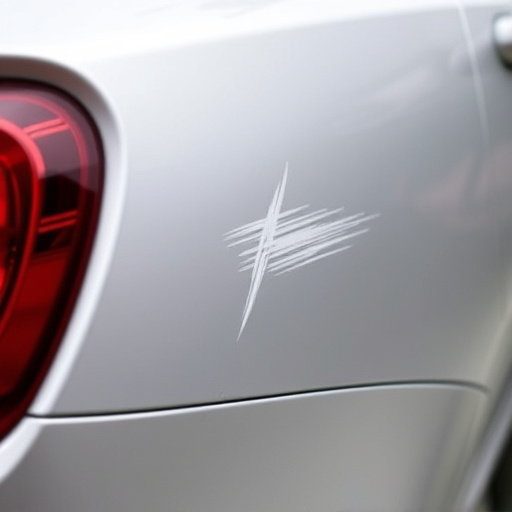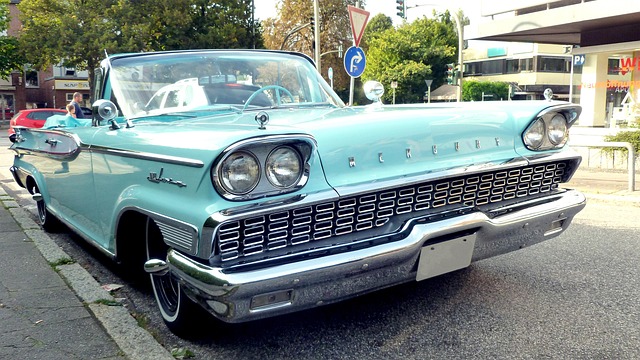Deep vehicle dents impact safety and aesthetics. Modern dent fixing uses tech-driven tools for faster, more precise results compared to traditional methods. Effective repairs require assessment, cleaning, specific tools, heat application, panel straightening, priming, and matching paint for optimal concealment.
Vehicle dent fixing is an art that involves restoring damaged car bodies to their original condition. Deep dents, in particular, pose a challenge for many car owners. This article delves into the intricacies of understanding deep dents—their causes and types—and explores the evolution from traditional to modern repair methods. We provide a comprehensive step-by-step guide to ensure effective vehicle dent fixing, offering practical insights for both professionals and DIY enthusiasts.
- Understanding Deep Dents: Causes and Types
- Traditional vs Modern Dent Repair Methods
- Step-by-Step Guide to Effective Dent Fixing
Understanding Deep Dents: Causes and Types
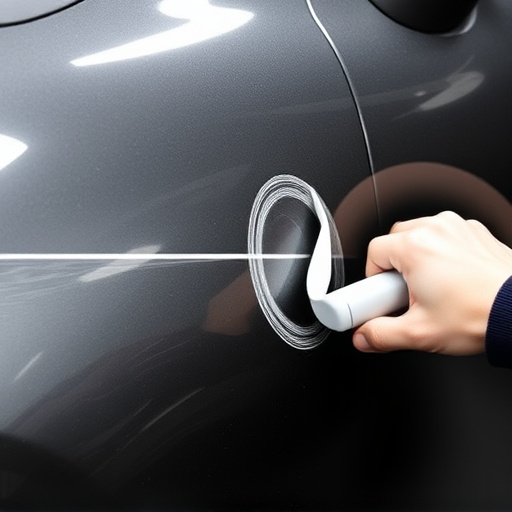
Deep dents on vehicles can be both unsightly and detrimental to a car’s structural integrity if left unattended. Understanding their causes is crucial in effective vehicle dent fixing. These indentations often result from various impacts, including collisions, parking obstacles, or accidental bumps, causing the metal panel to depress. The severity of the dent can range from shallow to deep, affecting not just the aesthetic appeal but also the overall performance and safety of the vehicle.
There are two primary types of deep dents: closed dents and open dents. Closed dents, also known as ‘non-rebound’ or ‘pressed’ dents, occur when the impact deforms the metal without breaking it, resulting in a concave indentation. On the other hand, open dents involve a break in the skin, often visible as a hole or tear, allowing air and moisture to penetrate the car’s body panel, which can lead to rust and further structural damage if not promptly addressed at a reputable car repair shop. Efficient vehicle dent repair techniques are essential for restoring these damaged areas, ensuring both the car’s appearance and safety remain intact.
Traditional vs Modern Dent Repair Methods
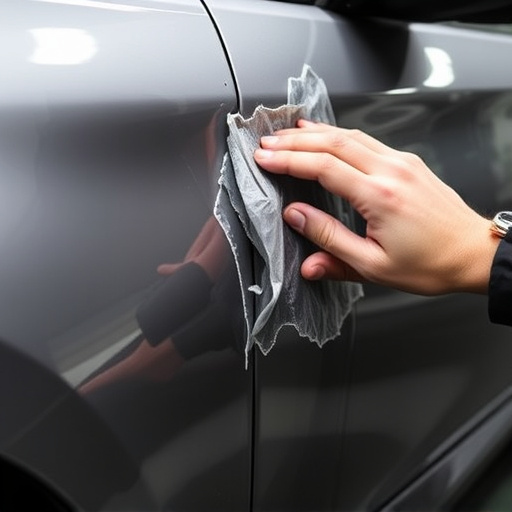
The world of vehicle dent fixing has evolved significantly over the years, transitioning from traditional methods to modern, advanced techniques. Classic car restoration enthusiasts might pine for the old days when repairs were more hands-on and precise, often involving intricate manual labor. However, today’s auto maintenance industry leans heavily on technology, offering faster and more efficient solutions for even deep dents.
Modern dent repair methods employ a range of innovative tools and techniques, such as pneumatic hammering, heat guns, and specialized vacuums. These tools allow for precise control during the fixing process, minimizing damage to the vehicle’s paintwork and ensuring a smoother finish. In contrast, traditional methods often relied on labor-intensive processes like hammering or using putty knives, which could lead to more time-consuming repairs and potential paint imperfections. With advancements in technology, car collision repair has become faster, more accessible, and ultimately, more cost-effective for both professionals and owners of beloved classic cars seeking that perfect restoration.
Step-by-Step Guide to Effective Dent Fixing
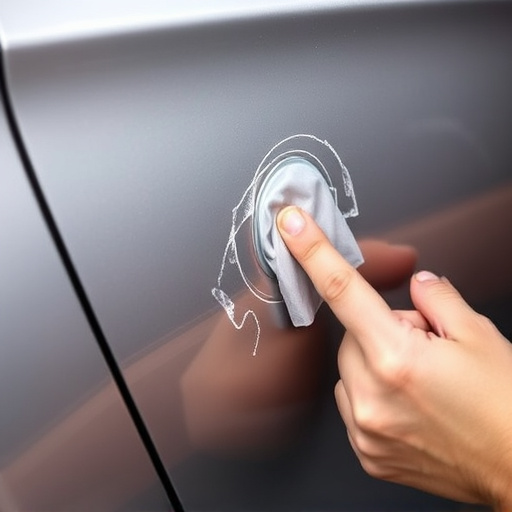
Fixing deep dents on vehicles requires a meticulous approach to ensure optimal results. Here’s a step-by-step guide to effective dent fixing:
1. Assess the Damage: Begin by thoroughly inspecting the dented area. Identify its size, depth, and location. Different types of dents may require distinct repair techniques, such as hammering, using dent pullers, or even professional painting services for car repairs.
2. Prepare the Surface: Before attempting any repairs, clean and degrease the damaged surface to ensure a smooth finish. Remove any debris or loose paint chips with fine-grit sandpaper. This preparation step is crucial for achieving precise results, especially when considering fleet repair services for multiple vehicles.
3. Use Dent Pullers: For shallow dents, dent pullers are an excellent tool. Gradually apply pressure while pulling the dent back into place. Be gentle to avoid marring the paint surface. This technique can be highly effective for hail damage repair, which often leaves numerous small dents.
4. Apply Heat (for deeper dents): Deep dents may require heat application to soften the paint and facilitate removal. Use a heat gun on a low setting and apply it to the dented area for a few seconds at a time. Be cautious not to overheat, as it can damage the paint or even the car’s panel.
5. Pry with Care: Using a flathead screwdriver or a specialized prying tool, gently pry the dented panel away from the body. This step requires precision and patience, especially in tight spaces. Once separated, carefully straighten the panel to its original form.
6. Paint and Finish: After repairing the dent, prime the area and match it precisely with the surrounding paint. Skilled technicians often use a combination of custom mixing and modern car paint services to achieve an indistinguishable finish.
Vehicle dent fixing is a skill that combines knowledge of materials science, precision work, and effective tools. By understanding the various causes and types of deep dents, you can select the best repair method, whether traditional or modern, to restore your vehicle’s aesthetic appeal. Following a step-by-step guide ensures accurate and lasting results, providing an optimal solution for efficient vehicle dent fixing.


